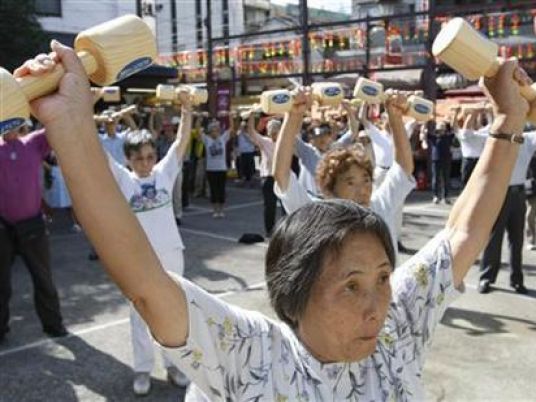
Older men who do moderate exercise several times per week may experience fewer injuries and hospitalizations from falls, a new study suggests.
For men and women combined, the exercise program did not significantly reduce fall injuries, but in men it was associated with reduced risks of serious fall injuries, including broken bones.
“We also found that men had greater improvements than women in their gait, balance and muscle strength, in response to the physical activity program,” said lead author Dr Thomas Gill, a professor of geriatric medicine at Yale School of Medicine in New Haven, Connecticut.
Each year, nearly a third of older people living in a community setting suffer a fall, with 20 to 30 percent of these falls resulting in moderate to severe injuries, the researchers write in The BMJ.
“Serious fall injuries are one of the most dreaded and devastating conditions experienced by older persons,” Gill told Reuters Health by email.
The researchers used data from the Lifestyle Interventions and Independence for Elders (LIFE) study, the largest study to examine the benefits of physical activity in older people.
The 1,635 participants were sedentary adults, ages 70 to 89, with physical limitations. They all scored low on a test of physical performance but were able to walk a quarter mile.
Half of the participants completed exercise programs twice a week in centers across the US. They also completed at-home exercises three to four times weekly including aerobic, strength, flexibility, and balance training activities.
The rest of the participants were assigned to a comparison group that completed a health education program and did upper body stretching.
The study team checked on participants’ rates of injuries from falls for up to 3.5 years, asking them every six months if they had fallen and broken a bone or gone to the hospital.
Overall, 75 people in the physical activity group, or 9.2 percent, had a serious fall injury, compared with 84 people, or 10.3 percent, in the comparison group.
There was no significant difference between the two groups in serious fall injuries, broken bones, or hospital visits.
After the fact, the researchers decided to look at sex differences and found that men in the physical training group had greater improvements on serious fall injuries, fractures and hospital admissions than women.
Dr Mary Tinetti, who also studies falls in the elderly at Yale but wasn’t involved in the new study, told Reuters Health by email that this work alone is not enough to prove that men benefit more than women from physical activity.
Many previous studies have shown that exercise also reduces fall injuries in women, said Tinetti.
Gill’s team too had previously found that physical activity can help with mobility issues in older adults of both genders. “Hence, women and men should be advised that physical activity is beneficial,” said Gill.
He added, “Exercises that focus on improving balance, gait and muscle strength are most useful. Older persons often fall because they have problems with their balance and gait.”
Tinetti noted that balance training is integral to preventing falls but may be safer to do in a supervised environment. She warned, “Balance training can be particularly tricky because to improve balance one needs to ‘challenge’ balance, which means to temporarily get off balance and then recover safely.”
“Serious fall injuries such as hip fractures and head injuries are comparable to strokes in clinical importance for older adults,” said Tinetti. “Therefore, it is important to identify ways to prevent series fall injuries, particularly as the population is rapidly aging.”
